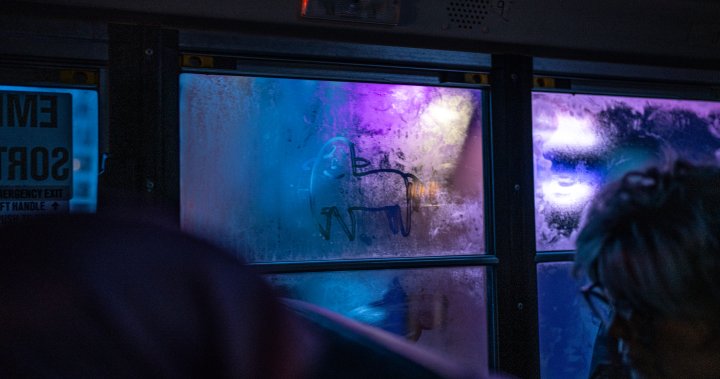As 2023 comes to an end and a new year begins, it marks a period of transition, where days can feel suspended outside of the usual rhythm of routine. Defined as the space between “what was” and “what’s next,” the term “liminal” can be used to describe everything from time to places to simply a feeling.
The aesthetic of liminal spaces has taken hold in the imagination of those online in particular.
Often depicted in photos of deserted shopping malls and long hallway corridors, liminal spaces are generally empty or abandoned places that appear eerie, forlorn or surreal, capturing in-between moments marked by uncertainty. The spaces might evoke feelings of being uneasy or unsettled, but without the ability to quite pinpoint what or why that is.
Initially coined in the ’70s, the trend suddenly gained popularity online in 2019, after an anonymous user from the social media platform 4chan requested “disquieting images that just feel ‘off’” on its paranormal-themed discussion board. The images shared, such as a picture of a large fluorescent-lit open room with yellow wallpaper and carpet, subsequently gave rise to the fandom of so-called “backrooms.”
Online posters envisioned a place beyond our dimension: an abandoned maze filled with aging carpet that can only be reached by slipping through cracks in reality. In video game culture, this reality-breaking is often referred to as “no-clipping,” which describes exiting a typical game environment by glitching through solid environments — such as walls — to reach the unfinished videogame “backrooms” left behind by developers.
Since then, the urban lore has inspired everything from video games such as The Backrooms to the Apple TV+ series Severance, and a horror film was announced earlier this year involving production company A24 and producers from Netflix hit series Stranger Things.
Though “backrooms” are an example of a liminal space, liminal spaces also exist beyond the confines of the horror-related genre. In addition to the uneasiness provoked by a setting vaguely resembling an office, the variety of liminal backdrops such as waiting rooms, rest stops and parking lots also elicit emotions like nostalgia and introspection.
The aesthetic trend further gained traction during the pandemic, with famous and busy public spaces suddenly unnaturally devoid of crowds, from New York’s Times Square to one’s local grocery store. By December 2023, subreddit r/LiminalSpace has reached nearly 700,000 members, and the automated photo-posting account @SpaceLiminalBot on social media platform X, formerly known as Twitter, has accrued more than 1.3 million followers globally.
In Toronto, one person intrigued by these in-between places has decided to take their online fascination with liminal spaces offline. Aryeh Bookbinder, who spends his day working as a designer, has been exploring Toronto’s liminal spaces.
“I have a very strong comfort when it comes to liminal space, and a lot of people have trouble understanding that,” Bookbinder said. “I feel like I’ve returned to my childhood. I feel like I’ve regained an ounce of innocence because these are the aesthetics — these are the colours, the form factors — that I grew up around. And having a restored sense of innocence and childhood is probably the most anyone could ever ask for.”
In the past few months, he started experimenting with running walking and bus tours to Toronto’s liminal spaces, sharing his obscure solo expeditions with others in an in-person setting under the community title of “Liminal Assembly.”
“These are not landmarks,” Bookbinder said. “You’re not going to find these spaces on Top Ten blogs.… These do not have pins on Google Maps. These are corners and hallways and rooms and buildings that you wouldn’t usually find yourself in. And so it’s just wandering.”
Every few weeks, a curious crowd of dozens would fill these usually empty spaces, occasionally perplexing shopowners and passersby as they gathered.
“I’ve had a range of reactions from laughter to crying in some of these spaces, and I think it’s profound. I think it’s because home and identity and existence are very touchy subjects that rub everyone differently. And I think it’s really the same emotion we’re all feeling, but we’re all expressing it and processing it in different ways,” Bookbinder said.
For the strangers taking part in the tour, they say they find themselves inexplicably connected from the start.
“(I’ve) been exploring liminal spaces before I knew what liminal spaces were. So I’ve always been attracted to the aesthetics of a backroom or of a liminal space,” 29-year-old Lauren Falger said, giving examples of exploring a new hotel or a roadside town during her frequent travels. “But when I saw the name, it was kind of like, ‘Oh yeah, it’s this thing that I’ve been chasing for a very long time.’”
“I definitely didn’t expect it to be this popular. A lot of people care. I think that’s a really cool finding or meeting so many people that have similar interest in this weird thing,” said 28-year-old Adrian Ruffolo, who first became interested in liminal spaces because it reminded him of the video games that he used to play as a child.
Sitting in the near-empty food court of Cumberland Terrace, Bookbinder also highlighted that one factor contributing to the liminal quality of these spaces is the implied expiry date that hangs over many of the buildings.
“We know they’re not going to be here for that long and they have demolition orders or they’re awaiting development,” Bookbinder said. “So these spaces will not be here forever, but we will continue to seek out ones that are in transitory states and enjoy it in different ways.”
In an effort to support the small businesses while creating tangible memoirs that can be held from these experiences, Bookbinder asks that all participants either bring or purchase an item during the tour that resonates with them and to share meals — such as pupusas, which Bookbinder used to eat with his dad — at the food courts for a multi-sensory experience.
At the end of the day, participants share the item in a round of show and tell, which ranged from 25-cent vending machine hockey cards and colourful sticky hand toys to a box of cotton pads and royal persimmons. Each item was paired with a memory or story.
“When we’re all together in these spaces, we kind of feed off each other and we share things that we wouldn’t usually share. It allows us to tap into memories in real time that we couldn’t actively remember,” Bookbinder said.
Jeff Paris recollected the opening day festivities of the Woodbine Mall & Fantasy Fair in Etobicoke, which was one of the last stops on the tour.
“When that mall was opening, there was a buzz through the school — I was in grade school — about how there was going to be ferris wheels and roller-coasters and a log ride. And it was a massive deal, an absolute massive deal,” Paris said, remembering how parking lot attendants were needed to direct the volume of traffic and TV commercials that ran 24-7.
Nearly 40 years later, Paris’s memory of the bustling mall stands in stark contrast to its present-day reality.
“Maybe in 50 years, people will be doing this with the spaces that we see as new today,” Paris mused.




